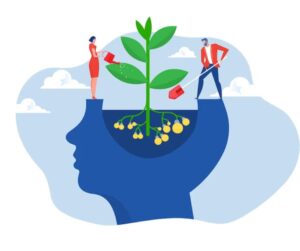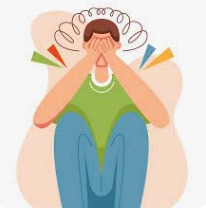The Unconscious Mind & NLP
Let’s talk about the unsung hero of our minds – the unconscious. You see, buried beneath the surface of our conscious awareness lies a powerhouse of potential, where our deepest desires, fears, and beliefs reside. It’s like the backstage crew of our consciousness, quietly pulling the strings and shaping our thoughts, feelings, and behaviors without us even realizing it.

Now, here’s where things get really interesting – enter Neuro-Linguistic Programming (NLP).
Picture it as the magic wand we wave to tap into the incredible power of the unconscious mind. With NLP, we’re not just scratching the surface; we’re diving deep into the murky depths of our psyche, uncovering hidden treasures and unlocking doors to transformation.
As a coach, I’ve seen firsthand the incredible impact NLP can have on my clients’ lives. It’s like shining a spotlight on those shadowy corners of the mind, illuminating the patterns and beliefs that have been holding them back. With NLP techniques, we can rewrite those old scripts, reprogram those outdated beliefs, and pave the way for a brighter, more fulfilling future.
But here’s the real beauty of it all – NLP isn’t just about changing our thoughts; it’s about changing our lives. It’s about stepping into our power, embracing our true selves, and creating the reality we’ve always dreamed of.
So, if you’re ready to embark on a journey of self-discovery, empowerment, and transformation, then NLP coaching might just be the key you’ve been searching for.
Get Ready to Rewrite your Story
Together, let’s dive into the depths of your unconscious mind, unlock its infinite potential, and unleash the unstoppable force within you. Get ready to rewrite your story, redefine your reality, and step into the life you were always meant to live. With NLP by our side, the possibilities are endless, and the adventure is just beginning.
Overcoming Fears

The process is based on the idea that phobias are often associated with specific visual and sensory representations in a person’s mind.
Phobias are irrational and intense fears of specific objects, situations, or activities. There are numerous phobias, and they can be categorized into different groups.
Examples of Common Phobias
- Arachnophobia: Fear of spiders.
- Acrophobia: Fear of heights.
- Claustrophobia: Fear of confined spaces.
- Agoraphobia: Fear of open spaces or situations where escape may be difficult.
- Ophidiophobia: Fear of snakes.
- Cynophobia: Fear of dogs.
- Trypophobia: Fear of clusters of small holes or patterns.
- Social Phobia (Social Anxiety Disorder): Fear of social situations and interactions.
- Aerophobia: Fear of flying.
- Hemophobia: Fear of blood.
- Dentophobia: Fear of dentists or dental procedures.
- Claustrophobia: Fear of the dark.
- Glossophobia: Fear of public speaking.
- Nyctophobia: Fear of the night or darkness.
- Thanatophobia: Fear of death.
- Emetophobia: Fear of vomiting.
- Automatonophobia: Fear of humanoid figures, like dolls or mannequins.
- Musophobia: Fear of mice or rats.
- Triskaidekaphobia: Fear of the number 13.
- Nomophobia: Fear of being without a mobile phone.
These are just a few examples, and there are many more phobias, each with its own unique characteristics. It’s important to note that phobias can vary in severity. It’s essential to understand that while Neuro-Linguistic Programming (NLP) includes various techniques that many people find helpful, there are no guarantees of success, and the effectiveness of NLP techniques can vary from person to person.

